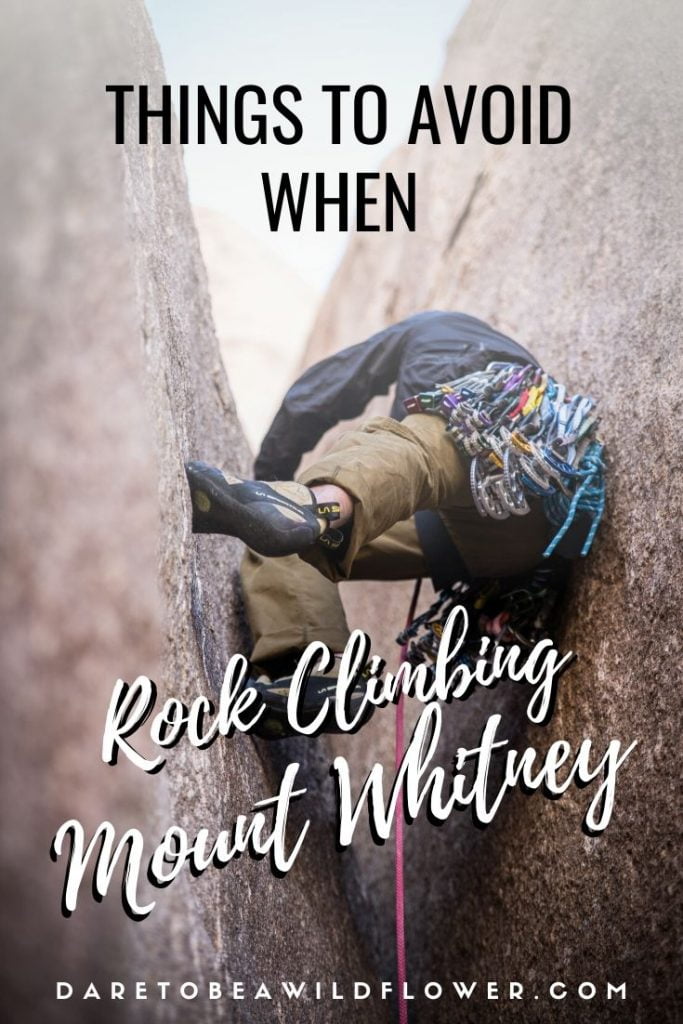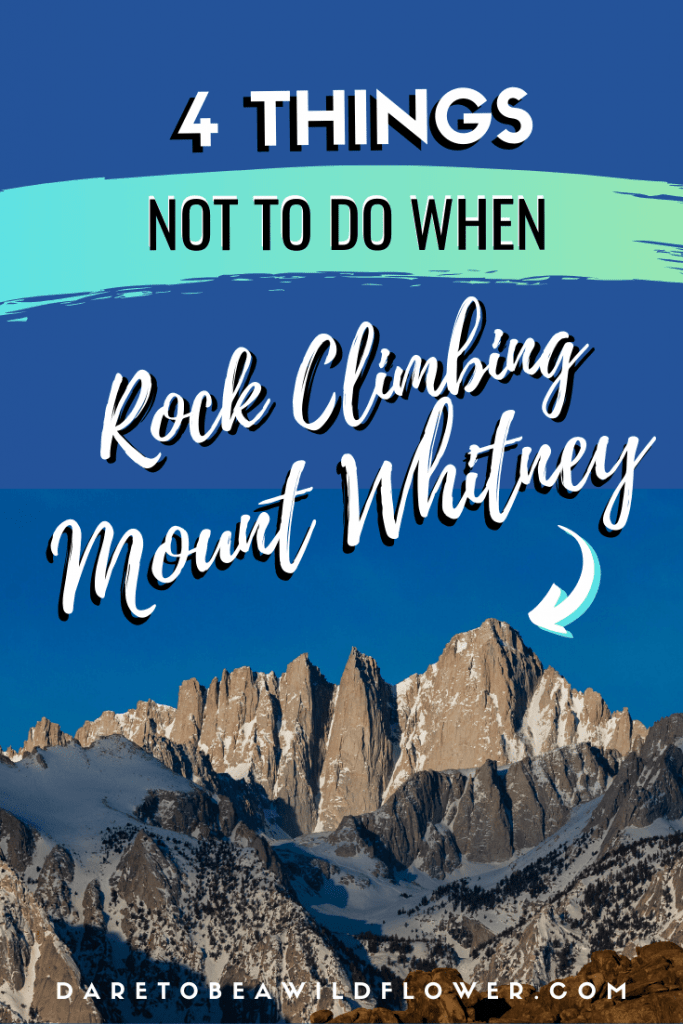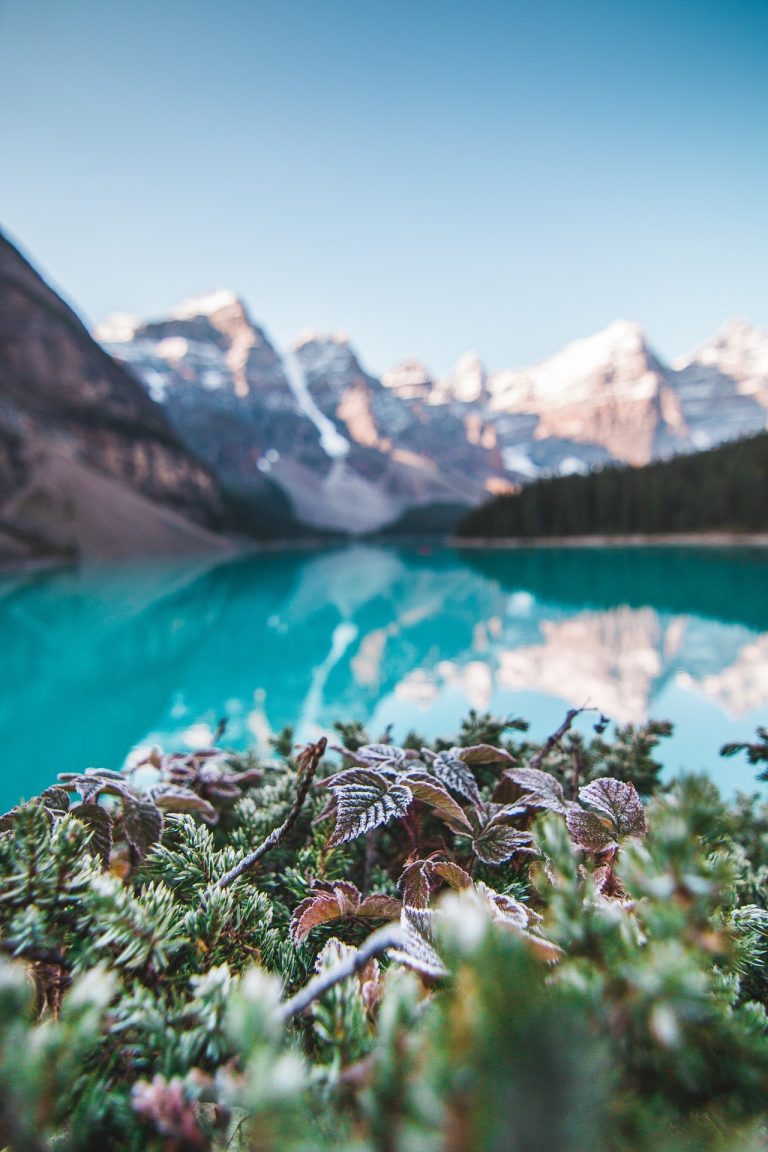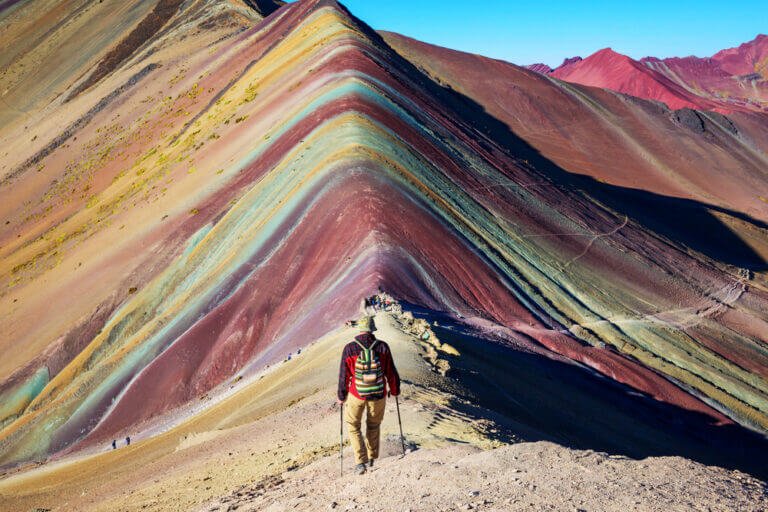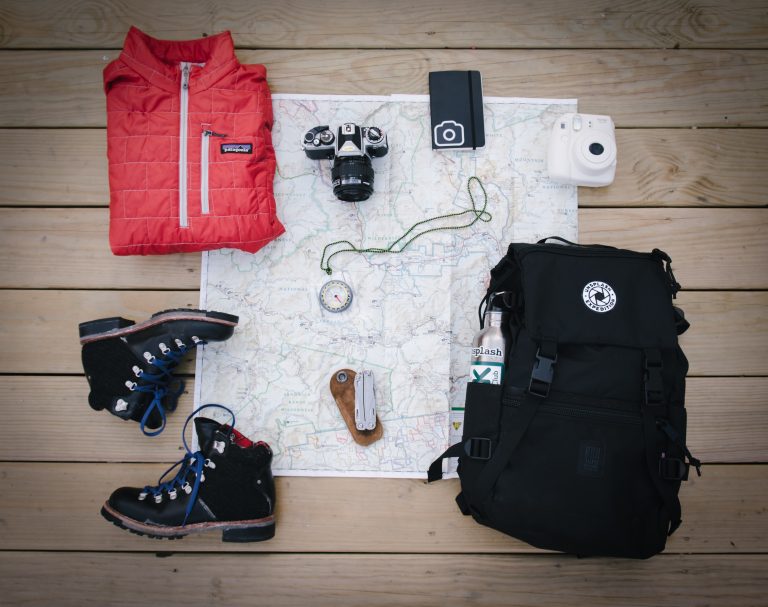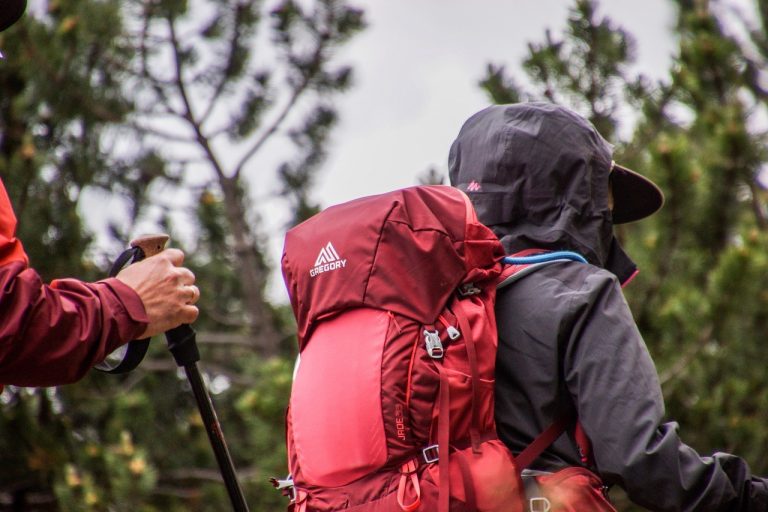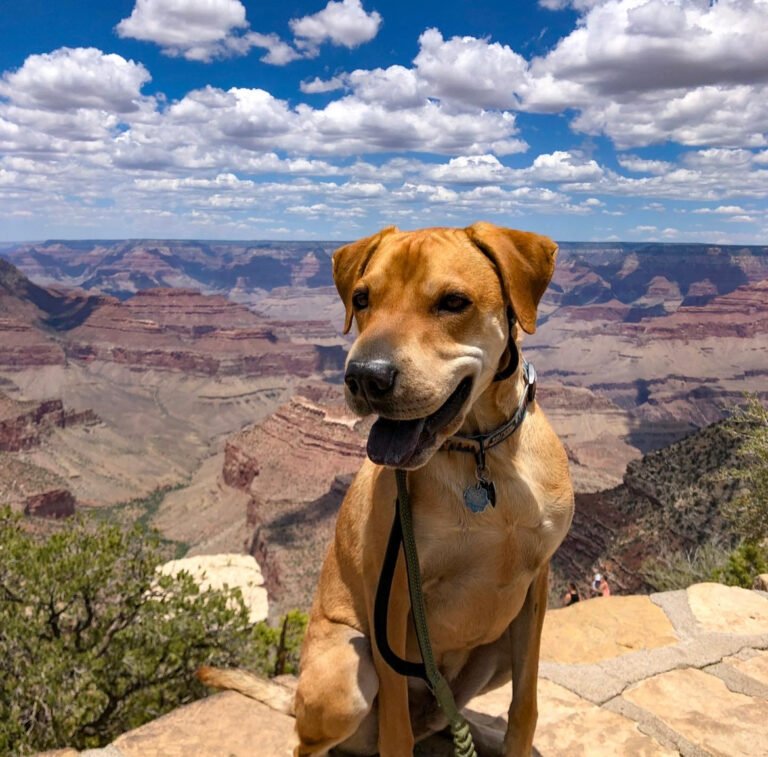Things To Avoid When Rock Climbing Mount Whitney
To be totally transparent, there’s a part of me that is finding it hard to tell you this story.
My ego cringes at the act of being so openly honest about our lack of preparation and the dangerous situation we found ourselves in.
Well, these are the risks you run when committing to climb one thousand feet of vertical granite well into the fall season.
On the other hand, there’s a stronger, more compelling voice inside of me that tells me to get over my ego, and humbly share my story with you so that you can learn from my mistakes and my strengths.
This blog is a place where we can all share our stories, learn from one another embracing opportunities outside of our comfort zone, and rise above the isolating and harsh feelings of failure.
Can we accept that missteps are a part of the game? You have permission and a place to talk about your miscalculated moves or sheer bad luck (sometimes the elements don’t give a flying figure eight about your revered preparation).
You can be a badass and also mess up from time to time. This is a sign that you are expanding your zone of what you believe you are capable of, and this my friend, is beautiful.
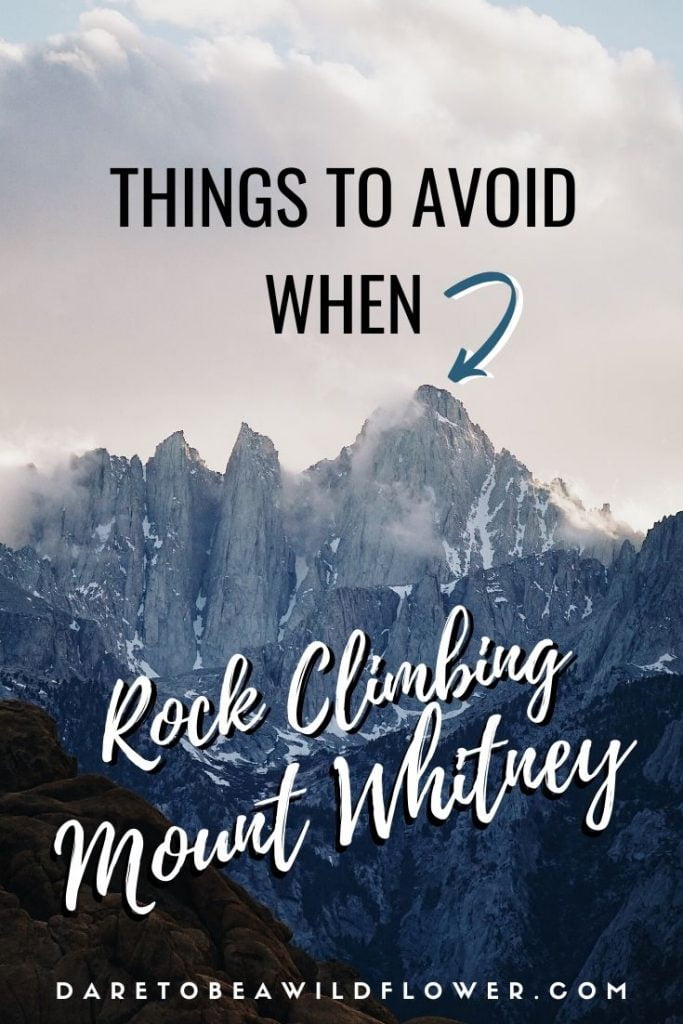
Today, you can be standing in line at the market or lying in the coziness of your own bed and be made aware of everyone’s success your climbing community by the omnipresent magic of social media.
It’s easy to share your life with the world when you are crushing your pursuits with success. We receive the accolades of double taps and admiration from our community for being risk takers, outdoor adventurers, and badass women.
But what about when things don’t go according to plan? Is there value in sharing mistakes?
Yes, there is! There’s an undeniable beauty in realness, vulnerability, and being open about our shortcomings.
We run the risk of people on the internet calling us idiots and other colorful names. Keyboard trolls can be outright nasty towards us and our admitted mistakes.
Or even more terrifying, people that we know and respect may look down on us for our defeats and miscalled judgements. So what? Is that really the worst case scenario?
At the end of the day, who am I to try to present myself as perfect? I’m not a professional athlete or mountain guide. And even if I was, there is still great value in these individuals sharing their faults.
Of course, it is extremely important to keep these slip-ups to a minimum when pushing vertical limits. The cost of a mistake could be tragic.
Taking time to process our miscalculations and then share them with other gravity defiers & wilderness explorers could potentially prevent ourselves or others from repeating these mistakes.

I had experienced a shit-just-got-real epic earlier this year while canyoneering.
Long story short: we were trying (and failing) to follow some extremely vague beta to exit a canyon in the San Gabriel mountains of Southern California.
We found ourselves swimming neck deep down a river, packs and gear soaked, a member of the group missing (the most frustrating and dangerous part of this situation) and the darkness of nightfall was chasing us faster than we could swim.
But that’s a story for another time.
Situations like this are the very real possibilities of these extreme mountain sports.
There won’t be anybody around to save you, so you better be prepared to save yourself if things gets real.
Risks run high as should the level of preparation to complete such objectives.
Of course, preparation encompasses things like technical skills, physical fitness, & know-how but also “softer skills” like: ability to communicate under pressure; mental fortitude to focus, plan, and execute; and don’t ever underestimate the skill of maintaining a good attitude.

Hah! Yeah right! Who made this summit sign?!
Alright, it’s time to eat this fat piece of humble pie & share this story of climbing Mount Whitney…
Last minute permit. Bag full of Trader Joe snackage. Rope check. Hardware check. Pay check (it was a Friday). All my backpacking gear in various shades of blue and purple packed away into my beloved and beat-up Gregory Diva 70L backpack.
We were ready to rock climb the East Buttress on Mount Whitney. Or so we thought.
If you are not familiar with Mount Whitney, let me introduce you to her. She stands tall and proud at 14,505 feet which makes her not only the tallest mountain in California, but the highest summit in all of the lower, contiguous United States.
Sounds like the perfect farewell-to-California climb to do right before moving to Asia for my unseen future, right?
Yeah, that’s what I thought too.
It was the first weekend of October in 2018 and we knew it was late in the season. But we didn’t realize it was that late.
My partner had done this climb many times before with speed and success. 5.7, 11 pitches. It should be a fun, steady day of climbing.
We were feeling confident and ready to send. Maybe this confidence is what had us overlook our inherently basic yet crucial mistakes.
Ultimately, these decisions led us to a situation where we found ourselves off-route, exhausted, and trying to continue our way up this behemoth of a mountain. It was late. It was snowing. It was black as night with a little bit of moonlight.
After 12 hours of climbing, we finally summited. Sweet baby Jesus, was I grateful! We were stoked to finally complete this climb, but I wasn’t feeling stoked enough to take a summit selfie; that was going to have to wait until the morning.

With the storm coming in, our bodies feeling beat, our minds exhausted from hours of crucial decision making, and the darkness of the night, we were in no condition to descend 11 miles down the trail or return back down the mountain via the arguably sketchier Mountaineers Route.
We slept in the summit hut overnight (somewhat) as we recharged our drained bodies and awaited the precious morning light. I was grateful to be partially protected from the unforgiving elements, although my tent and sleeping bag would’ve been so much better!

Summit selfie, yall! Can you see the relief my eyes?
By the way, there are two huts at the summit: one is accessible being that it has no door (brrrrr), and the other shelter containing emergency supplies is locked.
In the cold, misty, early hours of the next morning, we were awakened by the cheery celebrations of a large group joyously summiting.
They shared music with a little guitar, grievances about the conditions, and a little water and chocolate with us.
Never underestimate the power of sharing water or chocolate— especially on a summit, in the backcountry, or after a I-just-got-my-ass-handed-to-me type of climb.
This event of a climb occurred because of our overly chill approach to it.
We could have been more proactive with basic things like the weather, our timing, and mindfulness of gear.
Here is why:
Gambling with the weather.
Granted that we had just chatted with a friend that had successfully climbed a peak in this mountain range a week ago and was stoked about the weather, we were feeling good about our climb!
We talked to the rangers at the station when we got our next-day lottery permits. They mentioned some weather coming in our third day on the trail (exit day). We weren’t expecting to encounter the amount of snow that we did on the climb and figured we could hike out early day three.
We were willing to take our chances.
Starting the climb too late in the day.
Before we saddled up, we should have realized it was too late to begin climbing such a tall route.
We may have slept in a little too late before beginning our approach from Upper Boyscout Lake.
We figured it would take us 4-5 hours to send. Keep in mind, the summit towers at a whopping 14,505 feet of elevation— so let’s not forget about the mission of descending.
The plan was: climb fast, descent fast. But with the amount of snow we came across on the climb, this is much easier said than done.
Not protecting my water bladder valve enough while climbing in tight spaces.
Looking back, I should have tucked the entire hose into my pack while squeezing my way up the chimney (the snow threw us off and we climbed a variation of the East Buttress).
While my mind was exhausted and distracted by the cold, I began climbing up a chimney and my water hose got caught between my pack and the wall.
It completely ripped off the valve and emptied the bladder of all my beloved water. We still had a long way to climb and we were coming to the realization that we would be on this mountain overnight.
Dropping my extra layers along the approach to climb lighter.
I left behind my base layer down at Iceberg Lake where we pumped water before the climb. We were going to fly up the mountain and then descend the Mountaineers Route before dark.
At least that was the plan.
This extra layer would have been incredible to have while we were climbing in the snow at night or waiting out the storm in the summit hut overnight.
Now that was a type of cold I had never experienced before. My fingers and toes were numb from climbing snowy ledges for 12 hours. I may have experienced a case of first degree frost bite for a few weeks.
These are the major missteps that pop out in my mind when reminiscing on this climb.
Approaching this mountain with so much confidence, leisure, and ‘lax had us overlook the magnitude that weather and time hold in the wilderness.
Nevertheless, I’m glad to say that there are a few things I can look back on and be glad we were prepared for.
Bringing extra food, water, and headlamps.
If we weren’t properly fueled, hydrated, or able to see, we could have been in some serious trouble. Always bring extra just in case your adventure turns out to be much longer than anticipated.
Good Spirits
I cannot emphasize enough how valuable keeping a good attitude is when things get heads up.
Things are already rough in these situations, keeping calm and finding humor in the little things can make the difference between a miserable experience or a crazy time you can look back at and laugh.
Super Strong
Being physically fit and capable of pulling some moves definitely came in use here.
The bigger the objective, the more you should take your training seriously. You can’t afford not to.
In the end, I’m glad to say that these simple, avoidable mistakes cost us nothing more than some epic discomfort and one hell-of-a-story in the end.
May I never approach one thousand feet of climbing with this level of chill again.
Risk runs high when ascending monstrous, remote mountains in wild. The opportunity for error is ample and the weight of miscalculation can be heavy.
Climbing is a sport of mitigating risks. Those of us drawn to it are often allured by the spirit of going big and breaking through perceived limitations. The very nature of climbing is simultaneously it’s peril and it’s charm.
Related: #LoveYourCrag: 33 Ways Climbers Can Protect Their Crags and Planet
This post is an invitation for you to share your story with the community.
Let’s stay humble, share our adventures, learn from each other’s mistakes, and grow wiser as a community.
P.S. I’d love to hear your story.
Pin For Later | Things To Avoid When Rock Climbing Mount Whitney
